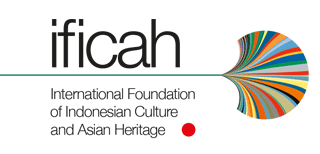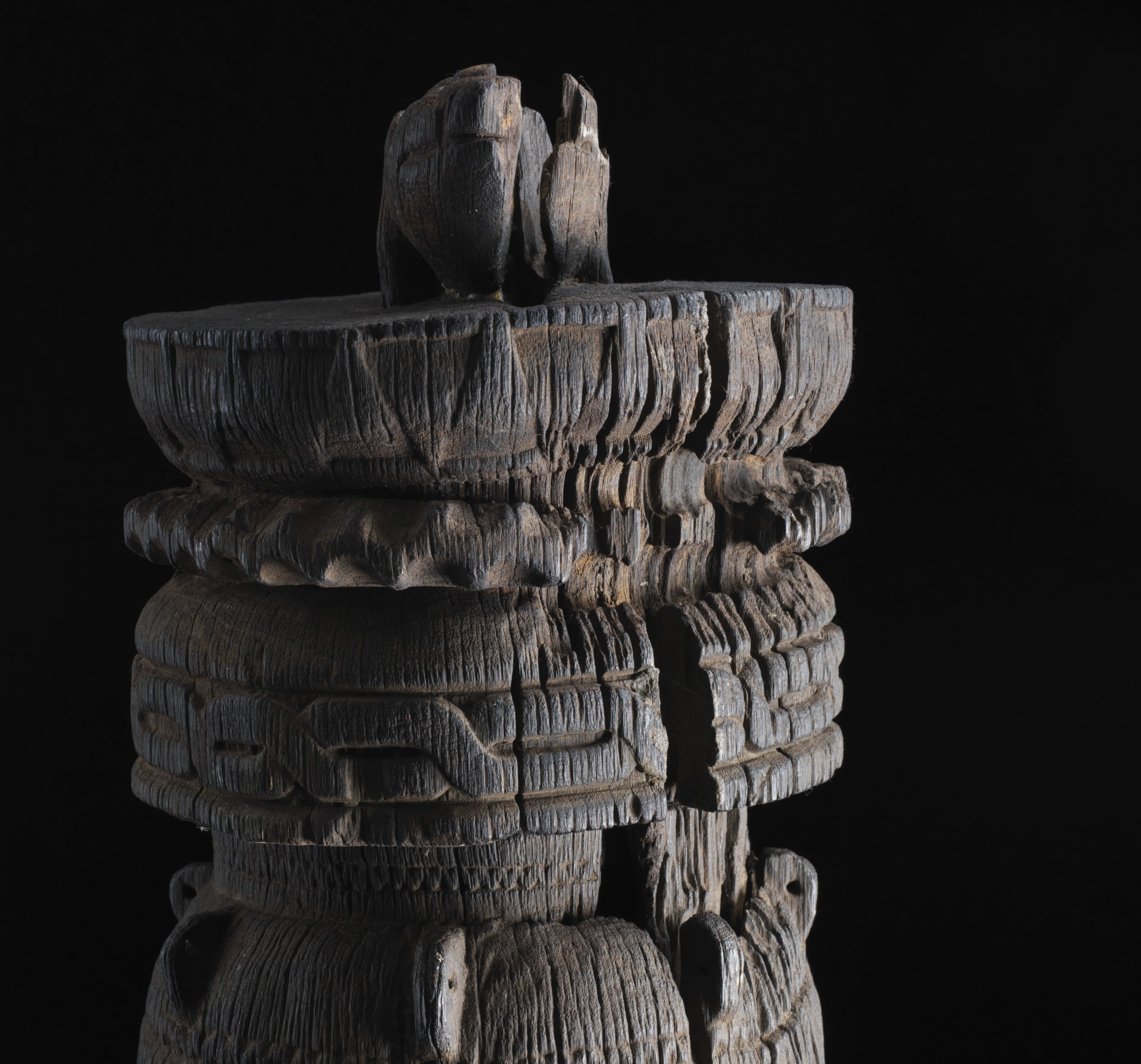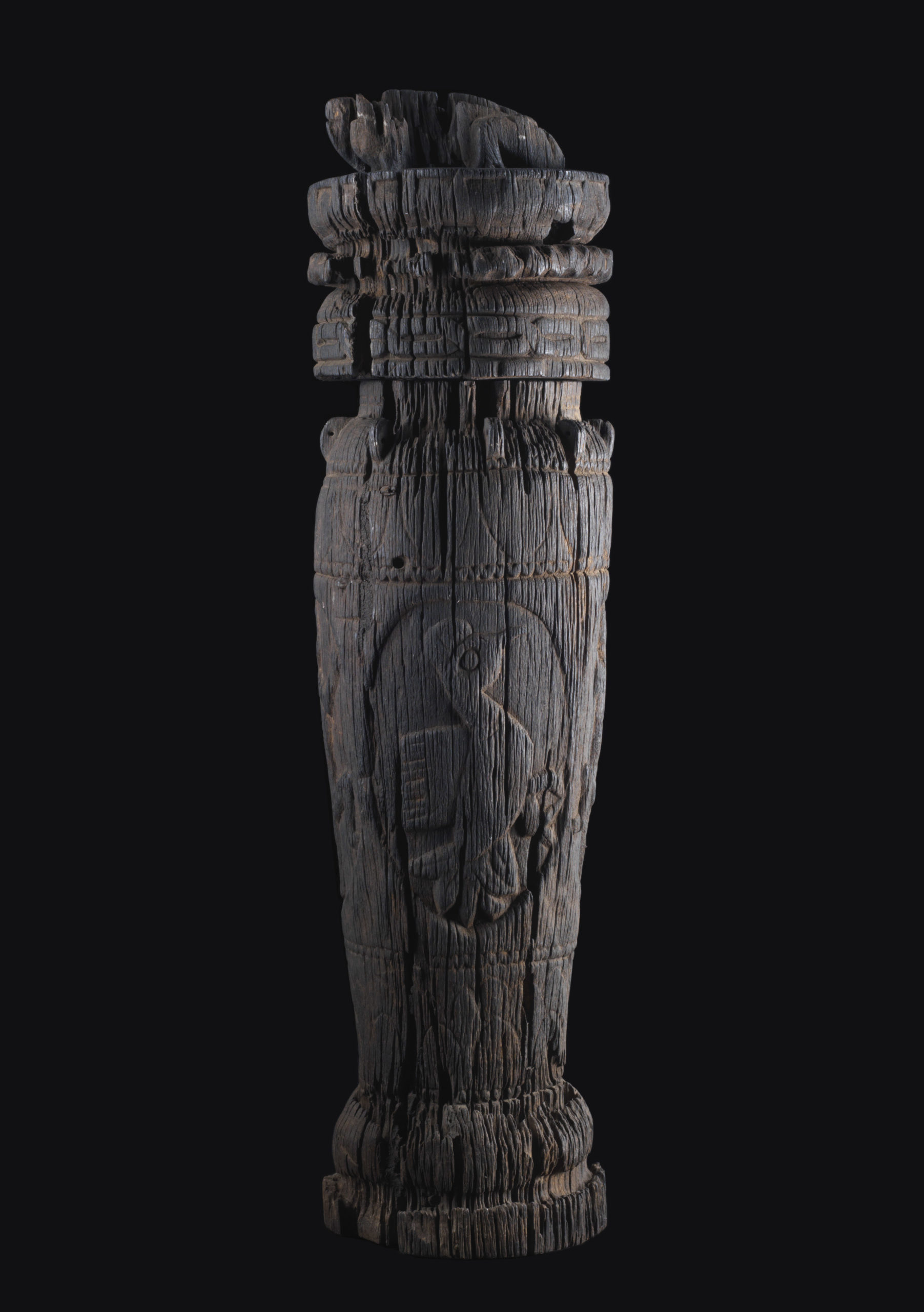Funeral urn
| Object | Funeral urn |
| Culture | Borneo, Northwest, Malysia, Sabah or Sarawak, Iban or Dussun |
| Time | Late 19th century (?) |
| Dimensions | Height 107 cm, diameter 28 cm |
| Material | Ironwood |
This is a funeral urn hollow carved out of an ironwood trunk and decorated with motifs like lizards and birds. On the removable lid there is a crab as a handle.
In Borneo, under T’ang and Song dynastic Chinese influences (8th – 10th century), the use of funeral urns seems to have emerged. Especially in Sabah and Sarawak, wooden urns were used for secondary burial of bones. Probably the holy jawet, the partly immeasurably immensely valuable celadon urns from the Song period in the possession of the richest Dayak, originally had the same function. Lizard motifs on the urn indicate the aquatic sphere and the reference to the afterlife, as lizards or snakes represent, probably originally because of winter rigidity and moulting (in the case of snakes) renewal and rebirth. The lizard motifs probably go back to weakened forms of the crocodile, which has stood for the sphere of the dead since the time of the Levantine empires. It is also said that the lizard taught man head hunting, i.e. a way to intervene in the cycles of life and death, thus enabling renewal. The urn also contains the depiction of a four-legged animal and a bird, probably popular representations of one of the omen birds of the god Singalang Burong as a soul guide, and a free interpretation of the tiger, which embodies the warrior state and the middle world and human world. The lid shows abstracted “crabs”, which are aso-dragon derivatives in the Iban. The style suggests a Dusun group as the manufacturer of the urn. The animals in this constellation create a connection between the underworld or aquatic sphere (lizards), the middle world (tiger) and the upper world (bird). The aso (crab) motifs on the lid catalyze the transmigration of souls.
The Dayak practice secondary burial. Secondary burial is common among almost all Austronesian ethnic groups. After death, the body is first laid out provisionally. Sometimes the dead are laid out in closed burial houses in front of the nave until the mummification and decomposition processes are completed. Much later, often years later, the bones are removed and finally buried. In this context, two death ceremonies are held: tantolak matei – the “pushing away of death” and tiwah, the “festival of redemption”. The time of the migration of the souls of the dead, which roughly corresponds to the phase of decay and transformation of the corpse after the primary burial, is considered a dangerous phase in which one is exposed to the influences of the spirit world and the natural balance is called into question. It is the task of priestesses (and hermaphroditic priests) to free the village from this “aura of death” through the ceremony of tantolak matei on an odd day, usually the third or seventh day after the burial. To do this, they call on sangiang, guardian spirits, for help. In this context, the rice souls are also sent to the upper world to transform into rain and to wash the house and the whole village from the effects of death.
The tiwah festival is only celebrated a few months or even years after a death. Usually, several funerals are combined in order to finance the costly celebrations. Apart from the ossuaries for the final burial, which are built on stilts, hampatong, wooden sculptures are made, whose souls represent the slaves of the deceased in the realm of the dead. Since the 19th century they have replaced the slaves who followed their masters to their deaths. On the last day of the tiwah, everything that belonged to the deceased, as well as all the people directly involved in the preparations, such as the owners of the axes (beliung) used to make the coffin or the carvers of the hampatong, are ritually purified with consecrated water. The task of the priests and priestesses is to lead the souls of the dead into the afterlife during the tiwah festival.
Supplementing Literature Back to room view










